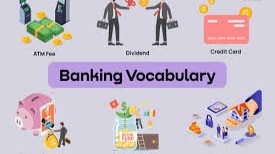Have you ever been dealing with a Bank and during the discussion some terms came up that you were a little too shy to ask the definition? We have all been there before – this list of terms seeks to address their definition as simple as possible. Why learn these definitions? Well this is about your money so the more knowledge you have the better!
Let us drive right in!
Amortization schedule – is a table detailing each periodic payment on an amortizing loan, as generated by an amortization calculator. Amortization refers to the process of paying off a debt over time through regular payments.
Bridging Loan – They are typically used by businesses in need of short-term funding. As the name suggests, bridging loans can help “bridge” a gap in a business’ finances rather than be a permanent financial solution, such as the gap between a payment being due and another source of funding available to make that payment.
Credit Card – a small plastic card issued by a bank, business, etc., allowing the holder to purchase goods or services on credit.
Credit Card minimum payment – is the minimum amount you must pay each month on your credit card balance. Your minimum payment will be: a flat dollar amount, usually $10, plus any interest and fees, or. the higher of a dollar amount, typically $10, or a percentage of your outstanding balance, typically 3% – 5%.
Credit Card limit – is the maximum amount of credit you can spend on your credit card — it’s the total amount you can borrow. Your credit limit and available credit aren’t the same. Available credit represents how much credit you can still use on your card as of today’s date.
CSV – For Visa®, Mastercard® and Discover® cards, the CVV is a three-digit number, and it usually appears on the back of the card, typically next to the signature box. American Express cards have four-digit CVV numbers, and they appear on the front of the card.
Equity injection – is a lump sum of money invested into a business at any stage. In some cases, such as the purchase of commercial property or when applying for an SBA loan, an equity injection refers to a down payment made by the borrower in order to qualify for the loan.
First charge mortgage – is a loan taken out for the purpose of buying a property, a second charge mortgage is essentially a second loan secured against your home, which can be used for any financial needs. Second charge mortgages are more commonly referred to as secured loans, or homeowner loans.
Interest expense – relates to the cost of borrowing money. It is the price that a lender charges a borrower for the use of the lender’s money. On the income statement, interest expense can represent the cost of borrowing money from banks, bond investors, and other sources.
Loan Tenor – is the term of the loan or credit given to the debtor (borrower) to disburse the loan installments given by the borrower. That is, if you want to apply for credit within the agreed tenor, for example, 12 months, you are required to repay the credit for up to 12 months.
Loan Payoff – The complete repayment of a loan, including principal, interest and any other amounts due.
Loan Principal – Principal is the original sum of money that’s borrowed in a loan or placed into an investment. The term translates to “first in importance” in Latin, and a loan or investment begins with this amount. Principal serves as the foundation for calculating interest on a loan or for the returns on an investment.
Overdraft Facility – A loan provided by a bank that allows a customer to pay for bills and other expenses when the account reaches zero. For a fee, the bank provides a loan to the client in the event of an unexpected charge or insufficient account balance.
Personal Line of Credit (PLOC) – a revolving account with a variable interest rate. It’s a type of loan you can draw from as needed and pay back with interest, much like a credit card. PLOC however then to be priced cheaper than a credit card.
Per diem interest – is the interest charged on a loan on a daily basis. The finance charge each payment is interest calculated since the last time a payment was made. For example, if you make a payment every 30 days you would see 30 days’ worth of interest deducted from your payment.
Term Loan – a monetary loan that is repaid in regular payments over a set period of time. Term loans usually last between one and ten years, but may last as long as 30 years. A term loan involves paying interest with the interest amount being added to the amount that needs to be repaid.
Total debt service ratio (TDSR) – is the percentage of gross annual income required to cover all other debts and loans in addition to the cost of servicing the property and the mortgage (principal, interest, taxes, heat etc.).
If you have any questions please do not hesitate to contact us at support@afbconsultingservices.com

